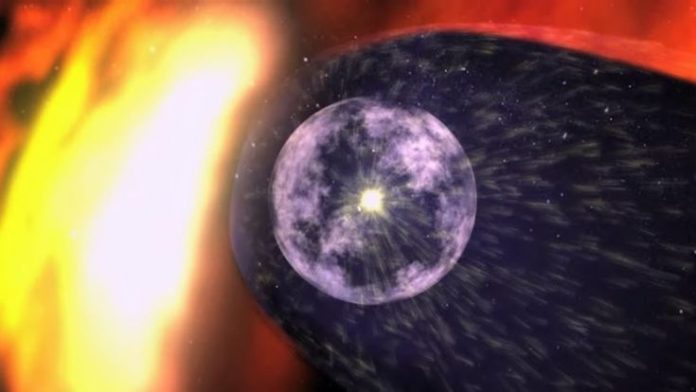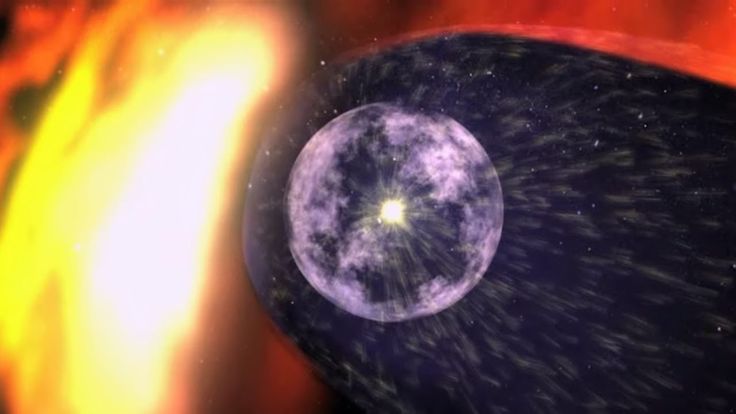
“Half a century behind the wheel and she’s finally discovered the universe’s hottest scorching roadside diner,” joshed Voyager flight director Suzanne Dodd, as NASA’s senior veteran spacecraft reported back from the outer reaches of the solar system. “Wall of fire” sounds like legend, but the truth, in the tale told by Voyager 1 and 2, is more profound and strangera fiery, tenuous border where the energy of the Sun ceases and the unknown starts.
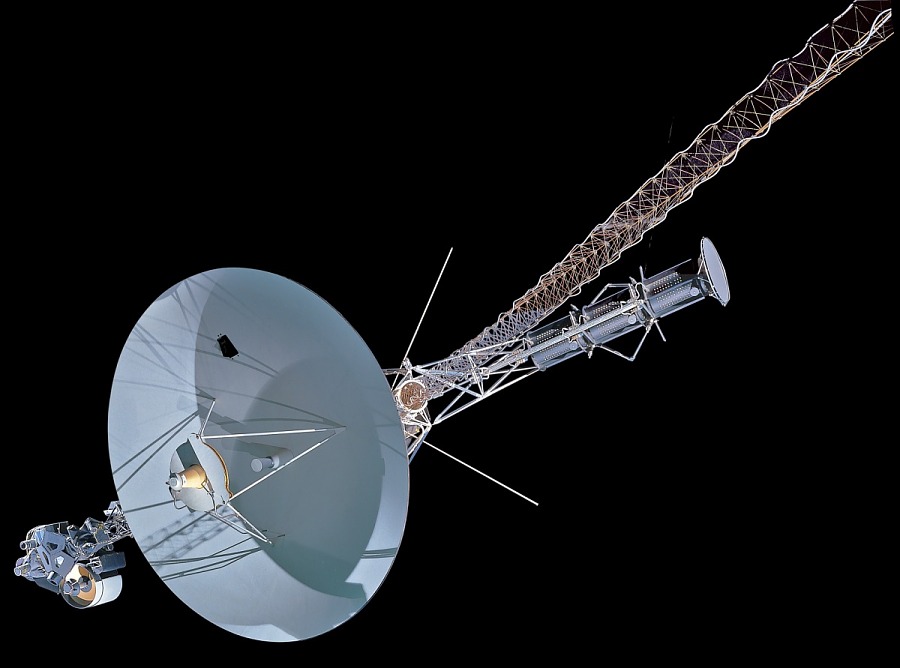
For four decades, the Voyager space probes have redefined discovery. Their travels beyond interstellar space have not only revealed breathtaking secrets, but have also forced scientists to overcome entrenched dogma regarding the edges of our solar system. With every new discovery trickling back, the cosmic limits turn out to be enormously more dynamic, intricate, and momentous than anyone had the temerity to dream. Here are seven of the most intriguing results of the new research into Voyager’s encounter with the ‘wall of fire’and what they bode for humanity’s place in the cosmos.

1. The ‘Wall of Fire’: A Blazing, Invisible Frontier
Voyager 1’s instruments have observed a superheated plasma bubble along the edge of the solar system, 30,000–50,000 Kelvin temperature zones. ‘Wall of fire’ is no wall, but an extremely thin zone where the solar wind meets the interstellar medium, scorching and compressing particles to their limits. Harsh as this zone is, it is so thin that Voyager’s hull is not rocked cosmic furnace without flame or fuel.
The validation came just as Voyager’s primary plasma detector had been in standby mode since its backup system was tracking cosmic rays and magnetic fields. The probes validated that as the solar wind ions dove, the number of cosmic rays rose exponentially and the magnetic field warped, which confirmed the presence of this surprising, thin, hot edge.

2. Magnetic Field Alignment: A Cosmic Surprise
The most unexpected result is the parallelism of magnetic fields on opposite sides of the heliopause. NASA revealed, “An observation by Voyager 2’s magnetic field instrument confirms a surprise finding by Voyager 1: The magnetic field in the area just outside the heliopause is parallel to the magnetic field within the heliosphere.”
This flips on its head earlier models that had pictured a transformative change at the edge. The suggestion is profound: the heliosphere can be connected more directly to the galaxy’s magnetic field environment than ever, redrawing our chart of how cosmic radiation becomes deflected and how Earth is shielded from high-energy particles.
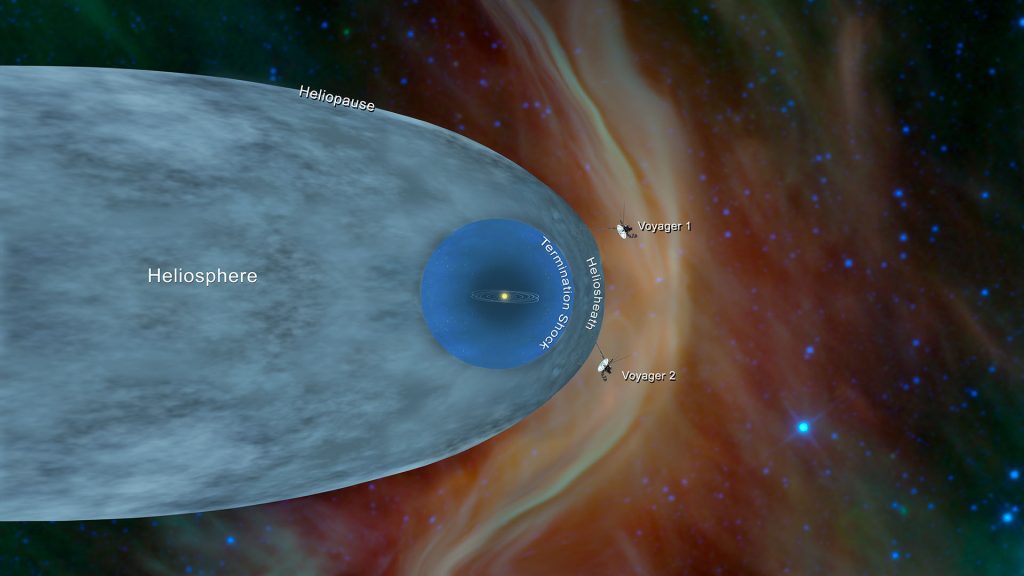
3. The Shifting and Dynamic Heliopause
The heliopause at which solar wind pressure is equal to interstellar medium pressure is not a stable boundary. NASA stated the following regarding it: “Scientists thought that the boundary of the heliosphere, the heliopause, could shift as the Sun varies in activity in cycles, like an expanding and shrinking lung.”
Voyager 1 and 2 spacecraft reached the heliopause at varying distances from one another, validating that solar activity results in the boundary fluctuating. The two probes indeed reached the ‘wall of fire’ at very similar distances from the Sun, which implies the boundary is stronger and less variable than some models predicted. The result implies the surprising stability and strength of the interstellar magnetic field.

4. The True Shape of the Heliosphere: Comet, Bubble, or Croissant?
Voyager measurements revived controversy over heliosphere shape. Physicists had presumed it to be comet-shaped, its tail extending way past the Sun. But new measurements indicate that the heliosphere may be more spherical or even croissant-shaped, squeezed by the incredibly high pressure of the interstellar magnetic field.
This shape affects how cosmic rays and interstellar material interact with our solar system. As Stamatios Krimigis of Johns Hopkins University put it, “For sixty years we’ve had the wrong image of the heliosphere.” The debate continues, but Voyager’s measurements are providing the first real clues to this cosmic mystery.

5. The Hydrogen Wall and the Unexplored Beyond
Outside the heliopause, theory would lead us to anticipate a ‘hydrogen wall’a reservoir of accumulated interstellar hydrogen atoms that have been gained through charge exchange with the heliosphere. This area, potentially 300–600 astronomical units from the Sun, is poorly mapped.
Voyager’s sensors are able to sample this wall in place, but their results are a solid proof of its existence. Future missions to space, like NASA’s Interstellar Plane, will have direct measurements of the density profile, composition, and structure of the hydrogen wall, and one opportunity to investigate the boundary of our solar system and galaxy.
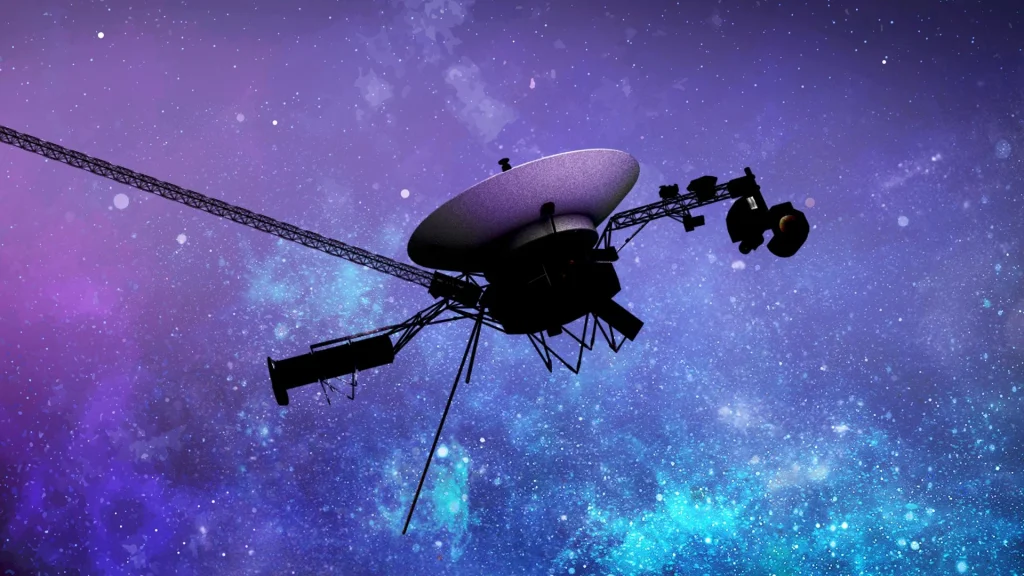
6. Resilience and Redundancy of Technology
The fact that Voyager is still operational is a testament to the engineering skill. Incredibly, despite the fact that the spacecraft is around 24 billion kilometers from home, it still continues to sendjust 160 bits per second, and each signal more than 22 hours longer. NASA’s power management, from backup thrusters to sensors, has held up fantastically beyond the retirement date of the mission. The power source for Voyager has lasted longer than ever imagined.
The lesson of the tale is simple: redundancy and flexibility are the keys to journeying across vast space. As mission manager Kareem Badaruddin put it, every choicefiring a primary thruster, for exampleis enormous gamble, but also possibility of expanding the sphere of human presence in the universe.
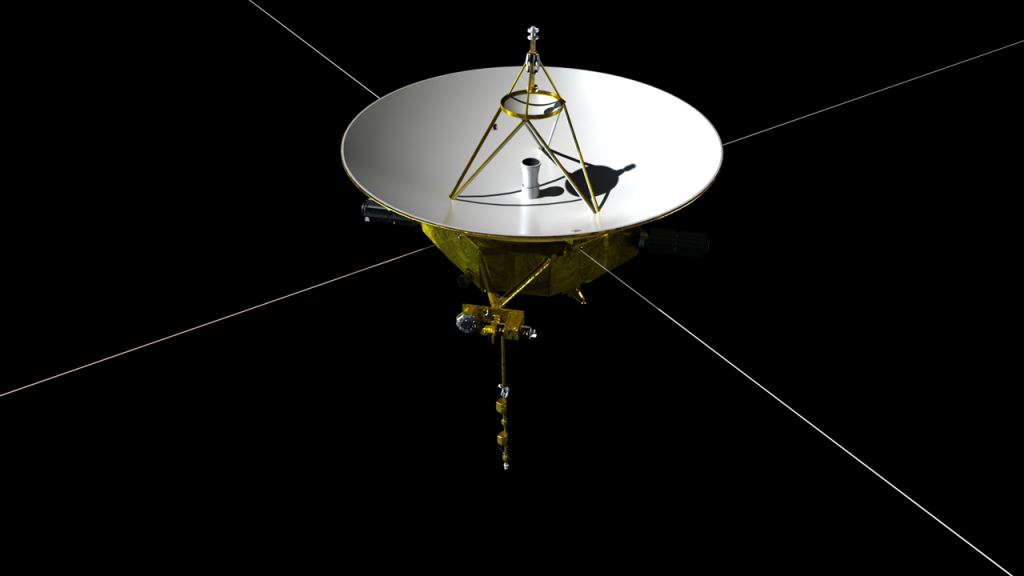
7. The Next Frontier: Interstellar Probe and Unanswered Questions
Voyager has opened the door to a whole new generation of exploration. NASA’s next Interstellar Mapping and Acceleration Probe in 2026 will follow behind the heliopause using new sensors, but an Intended Interstellar Probe could extend as far as 1,000 astronomical units from our world within 50 years. These explorers are working to give answers to long-standing questions: the composition of the ‘wall of fire,’ the composition of the hydrogen wall, and unfiltered galactic cosmic ray spectra.
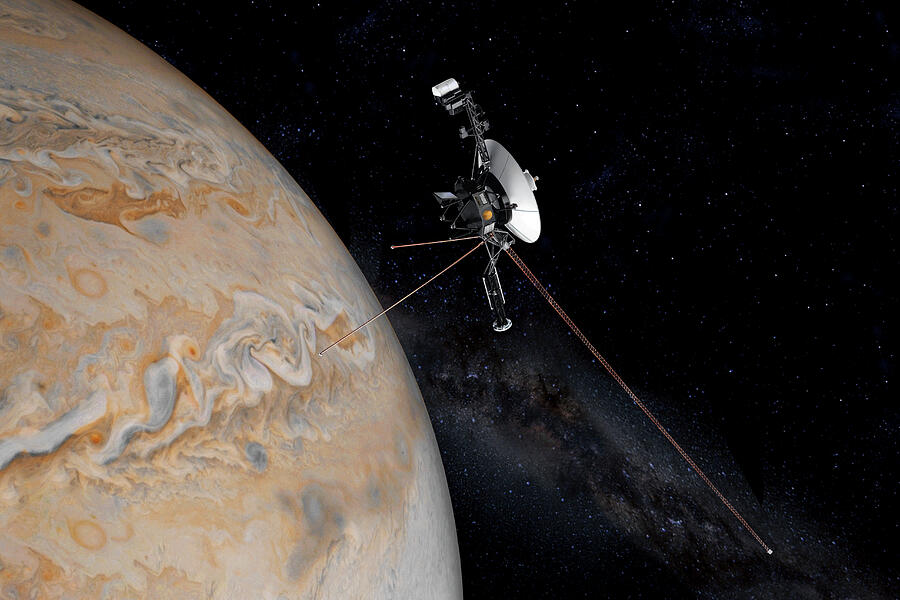
As Voyager project manager Suzanne Dodd puts it, “Voyager is charting new seas. It’s in a region where no flight has been and no flight will go probably for decades.” The decade of probes that follows will continue to build on this legacy, pushing into the unknown and shedding light on the forces that shape our position in the galaxy.
The Voyager missions have also shown us that the boundary of our solar system is not a fixed line, but an active, vibrant, and rather cohesive border. And by traveling through the ‘wall of fire they’ve turned scientific conjecture on its head and heralded the possibility of new discoveryreminding us that even after almost half a century, the universe has some surprises up its sleeve. As human society stands at the threshold of the next great leap to the interstellar frontier, the Voyager lessons will be a beacon light, inspiring curiosity and resilience in the face of the unknown cosmos.
